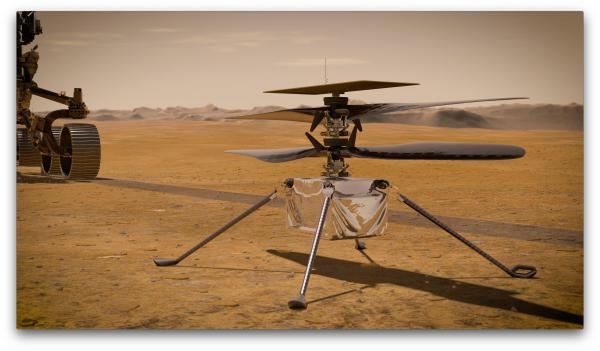On April 16th NASA announced the formal end to Ingenuity’s days as the first ever Martian helicopter, following its 72nd and final flight mission in January. This flight ended with a rough landing during which the helicopter’s blades got damaged and separated, leaving the plucky flying machine with its wings clipped. During the final meet-up of the Mars Helicopter Team there was cake, but none for Ingenuity as its latest data set was reviewed by the team from 304 million kilometers away. This data confirms the latest software patch allows it to work stand-alone as a data collection platform.
With these latest software changes, Ingenuity will wake up daily, activate its computers and perform a self-check of all its components before collecting sensor data and images. The main goal of this is to collect long-term performance data on the helicopter’s systems, with enough onboard memory to allow for measurements to be stored for around 20 years. This means that although the Perseverance rover will have to trundle on without its flying mission buddy, one day in the future another rover, helicopter or primate will presumably drop by to either communicate with Ingenuity if it’s still alive, or harvest its memory unit for data retrieval.
Thanks to [Mark Stevens] for the tip.














